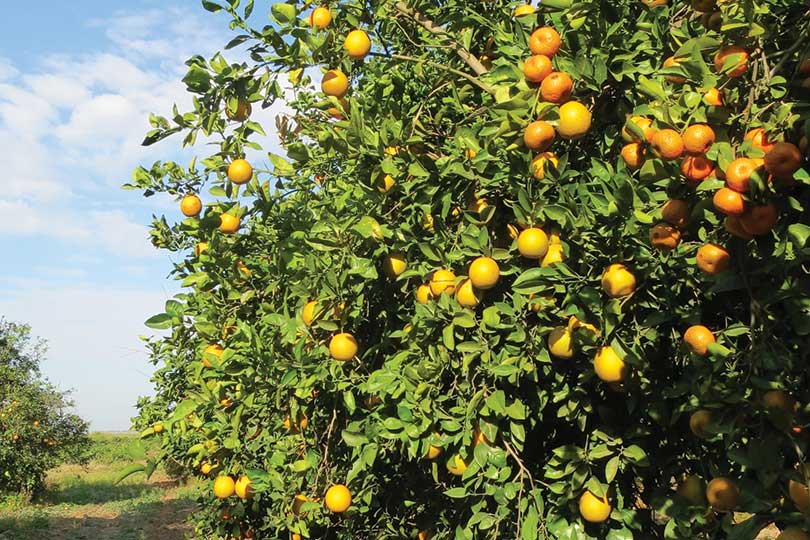By Jennifer Dorsett
Field Editor
Hurricane Harvey’s winds and water have long since receded, but the storm’s full impact on Texas citrus has yet to be determined.
Citrus canker, a devastating citrus tree disease, can be spread through the movement of infected plants and by wind, standing water or rain—all of which Harvey brought to Texas.
“Down here in the Rio Grande Valley, we seem to have mostly escaped Hurricane Harvey’s reach,” Dale Murden, Texas Citrus Mutual president, said. “That’s a good thing, because citrus canker can spread easily.”
But the Houston area likely suffered some disease movement.
“USDA (U.S. Department of Agriculture) did some modeling, and it’s very likely that citrus canker did spread in the Houston area,” Murden said. “It’s just a question of how much and when we’ll start to see those effects.”
Citrus canker is a bacterial disease and causes lesions on the leaves, stems and fruit of plants. While not harmful to humans, the disease causes unsightly blemishes on fruit, making them unmarketable and leaves infected trees vulnerable to secondary infection from other pests.
The original citrus canker quarantine zone was established by the Texas Department of Agriculture in the Rancho Viejo area of the Rio Grande Valley in 2015 when canker was first identified in the area. Since then, two different southwestern portions of the Houston-Woodlands-Sugarland metropolitan area also have been placed in quarantine.
That means no citrus fruit, plants or plant stock—such as rootstock or bud grafts—can be moved into or out of these areas.
The danger now faced by Rio Grande Valley growers is that infected or contaminated plant material may be brought unknowingly from the Houston area to the Valley.


Majority of citrus in Texas comes from the Rio Grande area, but Florida may be the state that gets hit the hardest.